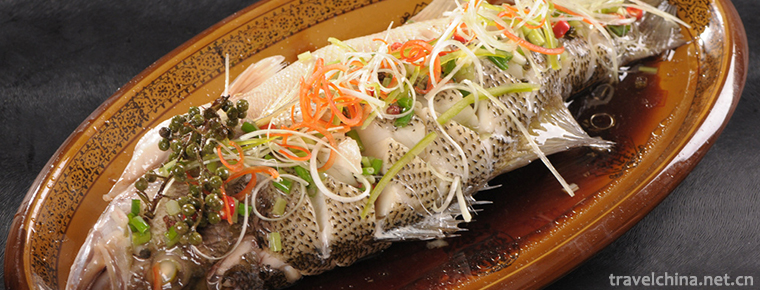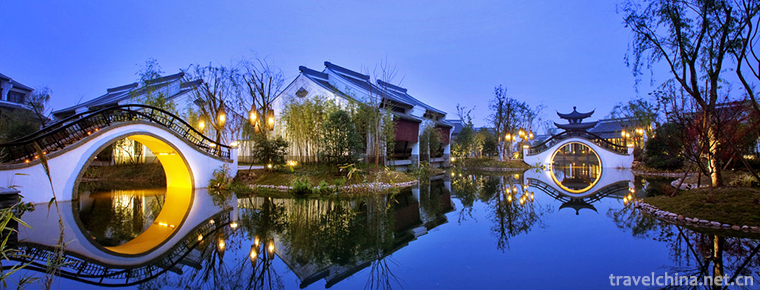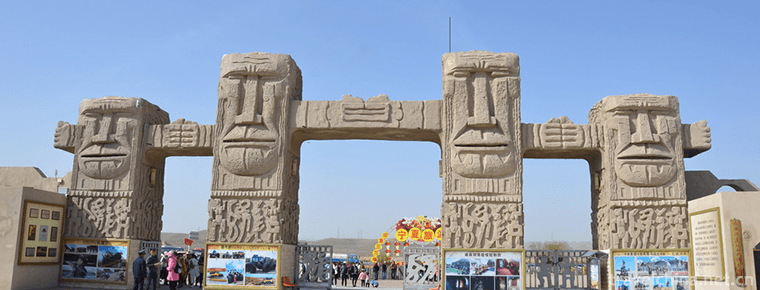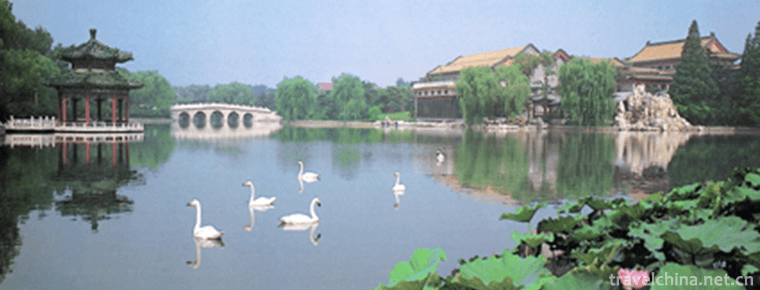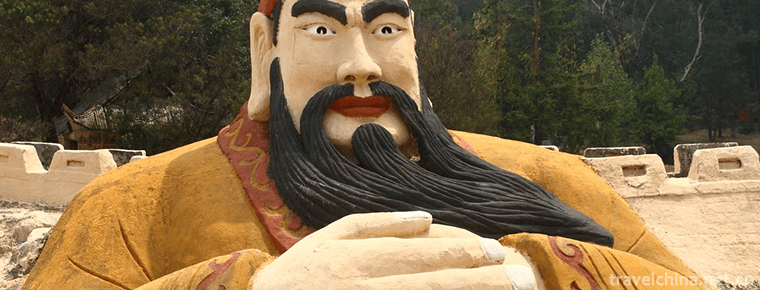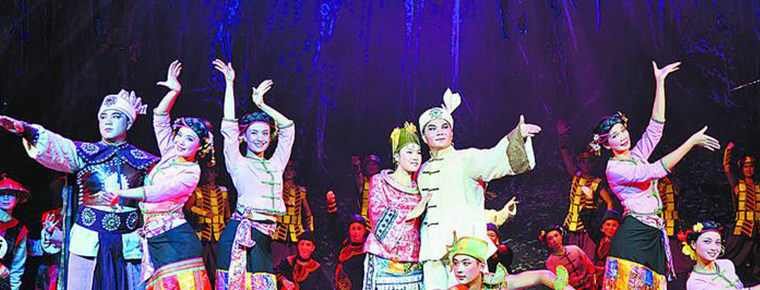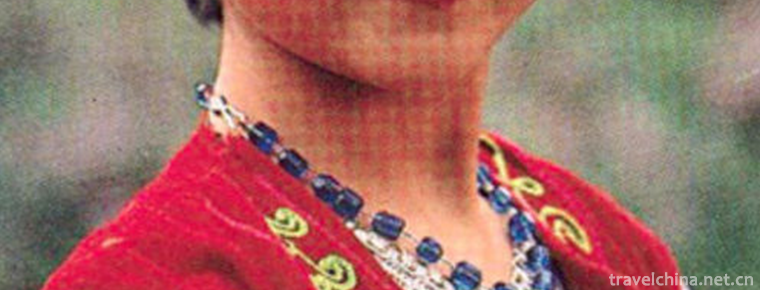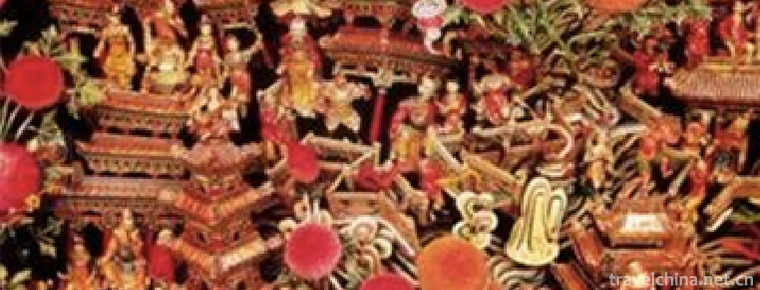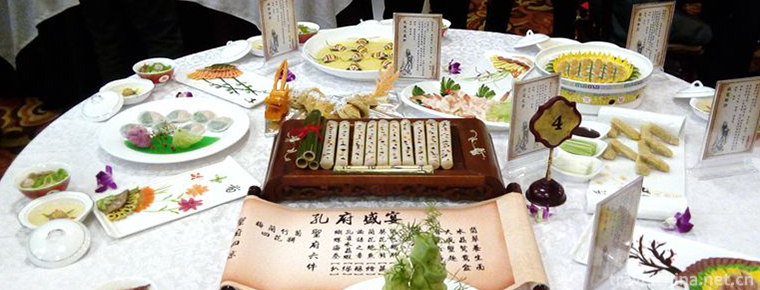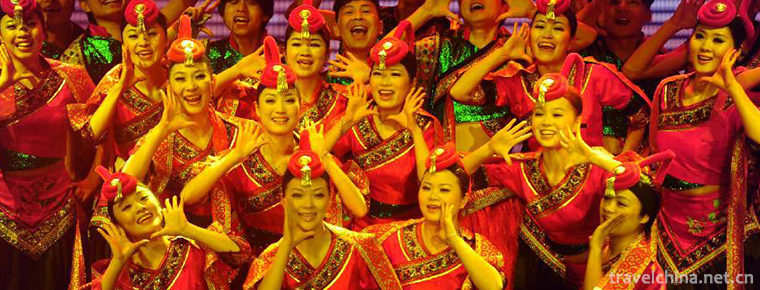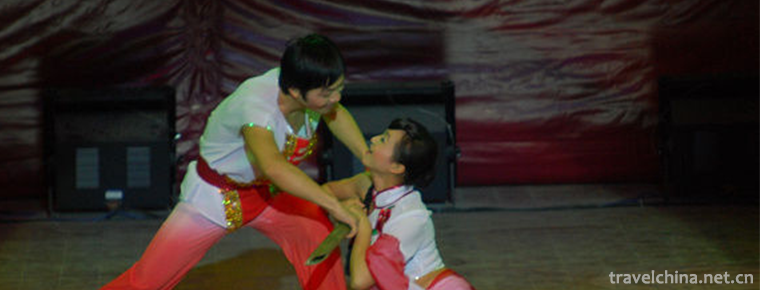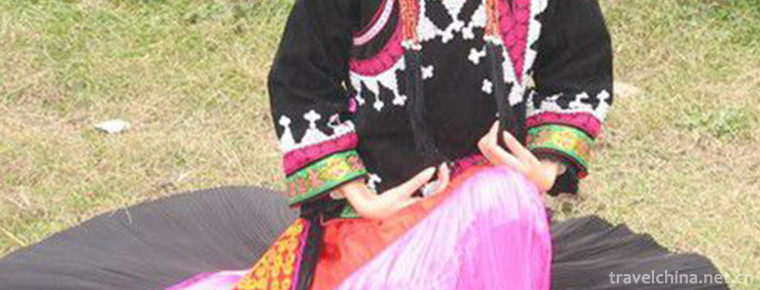Qingtian Stone Carving
Qingtian Stone Carving
Qingtian Stone Carving, a local traditional art in Qingtian County, Zhejiang Province, is one of the national intangible cultural heritage.
Qingtian stone carving originated in the period of "Kanze Culture" 5000 years ago. During the Tang and Song Dynasties, there were breakthroughs in creative themes and techniques. During the Five Dynasties, subject matter capture became widely used as a religion item. During the Yuan and Ming Dynasties, Qingtian stone carving had a high level of round carving skills. Up to the Qing Dynasty, Qingtian stone carving absorbed the craftsmanship of "Qiaoyu" and pioneered the technique of "multi-level carving" in Chinese stone carving. Qingtian stone carving is a school of its own. It enlarges its atmosphere, is exquisite and delicate, has both form and spirit, and its tone is realistic and meaningful.
On May 20, 2006, Qingtian stone carvings were selected into the first batch of national intangible cultural heritage list, the heritage number_-33. In May 2018, Qingtian Stone Carving was selected as the first national revitalization catalogue of traditional crafts.
historical origin
Qingtian stone carving has a long history. In the Zhejiang Museum, there are four stone piglets carved in Qingtian during the Six Dynasties, which were the tomb supplies at that time. Xiaoshi pig, though concise and rugged, records the history of stone carving in Qingtian more than 1500 years ago. The lines of the works are concise, the shapes are simple and simple, and the form and spirit are both in the works. The artistic features of Han and Wei can be seen.
During the Tang and Song Dynasties, Qingtian stone carvings developed. The stone statues of Qingtian in the Wuyue period of the Five Dynasties discovered in the twin towers of Longquan show that there was a breakthrough in the theme and technique of the stone carvings of Qingtian in the Tang Dynasty. By the Song Dynasty, Qingtian stone carving absorbed the production technology of "Qiaoyushi", used the skills of "modelling according to circumstances" and "choosing according to color", and gave full play to the advantages of stone color, stone quality and carvability of Qingtian stone itself, creating a pioneer of "multi-level carving" technology. Multi-level carving is a major feature of Qingtian stone carving. It is difficult for any jade carving to delicately depict and deal with complex layers.
In the Qing Dynasty and the early Republic of China, Qingtian stone carvings were often selected as tributes as famous products in the south of the Yangtze River. On the Eighty-Day Longevity Festival of Qianlong, ministers used Qingtian stone carvings to make a set (60 pieces) of "Baodian Fushu" seals for birthday ceremonies (the existing Beijing Palace Museum). With the opening of ocean-going commerce and trade, Qingtian stone carvings have been exported to Britain, the United States and France. They have participated in many international competitions, and won prizes at the Paris Games in 1899, Belgium Games in 1905 and the Pacific World Exposition in 1915. In China, in 1909, Qingtian Stone Carving won a silver medal at the Nanyang Exercise held in Nanjing.
The Qingtian County Chronicle of Guangxu in Qing Dynasty has a record of "Zhao Zi-ang began to take the lamplight stone of his hometown for printing, and it prevailed in the Ming Dynasty". Zhao Ziang's reputation for painting and calligraphy is so great that his achievements in using the backlog of Qingtian stone engravings have been forgotten for a long time. Wen Peng of the Ming Dynasty was a lucky man. By the side of Xihongqiao in Nanjing, he happened to meet an old man who carried Qingtian stone. He bought four baskets of Qingtian permafrost, which enabled him to display his artistic talent of seal engraving and become a master of seal engraving, thus creating a new era of seal engraving in China. In the Ming Dynasty, Qingtian Stone, which was the most warm and lovely stone in the world, made an indelible epoch-making contribution to the development of ancient seal carving art in China. By the Qing Dynasty, Qingtian's stone sculptures, such as "the great immortal Buddha, the small cup, several cases, the fine seal carving of Jiaojiao, the recalcitrant tiger, leopard, bear and lion", had been expanded from practical products to ornamental products.
According to historical records, Qingtian stone carving began in the Six Dynasties. It pays attention to applying skills according to aptitude and color. It has stone, blanking, carving, wax sealing, embellishing and other processes, especially carving skills. It is also used alternately in round carving, carving, relief and line carving. Qingtian stone carvings have a wide range of themes, fish, insects, flowers, birds, landscape figures, are meticulously carved, both spiritual and physical, realistic and meaningful methods are complete, the atmosphere is not lost in refinement, process specifications, self-contained.
After the founding of New China, Qingtian stone carving has developed rapidly. More than 10,000 stone carving practitioners have an annual output value of hundreds of millions of yuan, and their works are exported to more than 40 countries and regions.
Inheritance and Protection
Inheritance value
Qingtian stone carving is popular not only because of its exquisite carving skills, but also because of its precious carrier, Qingtian stone. Qingtian stone carving is an excellent national culture created by generations of stone artists and appreciators. It is an art with life and soul. In the self-power of functional aestheticization, some aesthetic tendencies are stronger, or their utilitarianism focuses on spiritual will rather than the original form of material function. Their value transformation seems more natural and smooth, and more loved by modern people.
Its rich content and theoretical guidance value are the essence of traditional craft culture. It is of great significance to the construction of material culture with Chinese characteristics in the 21st century.
Current situation of inheritance
High-quality pyrophyllite has been exploited for more than a thousand years, and its resources are nearly exhausted. At the same time, the scale of Qingtian Stone Carving Handicraft Workshop is gradually shrinking. Traditional techniques are in danger of losing their heritage and need to be rescued and protected urgently.
Heritage figures
Nie Dongfang, born in October 1928, male. June 2009 was selected as the third batch of national intangible cultural heritage successors. Declaration item: Qingtian stone carving.
Zhang Aiting was born in February 1939, male. In 2012, he was selected as the fourth batch of national intangible cultural heritage successors. Declaration item: Qingtian stone carving.
Zhang Aiguang, male, Han nationality. In 2018, he was selected as the fifth batch of national intangible cultural heritage successors. Declaration item: Qingtian stone carving.
protective measures
Qingtian is the home of stone carving, and stone carving is the gold card of Qingtian. Qingtian local government and all walks of life attach great importance to the propaganda, inheritance and development of Qingtian stone carving, a national intangible cultural heritage. Qingtian Stone Carving Museum was built in 2006, Qingtian Stone Carving Art School was founded in 2008 relying on Qingtian Vocational and Technical School, Qingtian Chinese Stone Culture Tourism Scenic Area was founded in 2009, and a small stone carving town was built in the mountain pass of the birthplace of Qingtian Stone Carving.
social influence
Honorary recognition
During the reign of Emperor Qianlong in the Qing Dynasty, the Minister of heaven paid tribute to the emperor with a set of sixty seals of Qingtian stone carvings "Baodian Fushu". During the Tongzhi period, Qingtian Stone Carvings were exhibited at the "St. Louis Expo" in Chicago, USA. During Xuantong period, Qingtian stone carvings were exhibited at Nanyang Exercise in Nanjing and won a silver medal.
In 1915, Qingtian Stone Sculpture won the Silver Medal, the highest honor award at the Panama Pacific Expo (USA).
In 1982, Qingtian Stone Carving won the first National Arts and Crafts Hundred Flowers Award. Three works, Sorghum (Lin Rukui's), Spring (Zhou Baiqi's) and Autumn (Ni Dongfang's), won the second prize for excellent creative design.
In 1985, Vineyard (Liuxiushan) won the first prize of Excellent Creative Design in the Fifth China Arts and Crafts Hundred Flowers Award. Shanghai People's Fine Arts Publishing House publishes the postcard Qingtian Stone Carving. Geng Biao, Chen Muhua, Wang Renzhong and other party and state leaders attended the Qingtian Stone Sculpture Fair held in Beijing. Defense Minister Zhang Aiping inscribed the inscription "Spiritual Craft Spirit" for Qingtian stone carvings.
In 1990, Vineyard (co-authored by Zhang Mei) was presented for permanent display in the headquarters showroom of the World Trade Center Association in New York, USA. Seal Carving (started by Xiafa) won the first prize of Excellent New Products in the 9th China Arts and Crafts Hundred Flowers Award.
In 1992, the Ministry of Posts and Telecommunications issued a set of four special stamps for stone carvings, Chun (Zhou Baiqi's work), sorghum (Lin Rukui's work), bumper harvest (Zhang Aiting's work), and Huahao Yueyuan (Ni Dongfang's work). Qingtian County Party Committee and the county government held the first stone carving culture festival, which was reported by CCTV, Economic Daily and other news media. Qingtian Stone Stamp Memorial Book was published.
At the West Lake Expo in Hangzhou in 2000, Qingtian's stone sculptures Zhongkui Married his sister, Wanli River and Mountain, and Jugao Shengyuan won the gold medal.
Important Exhibitions
In 1972, U.S. President Nixon visited China to make 500 stone carvings "elephants" in Qingtian and bring them back to the United States.
In 1956, Qingtian's stone carvings were presented as a national gift to Voloshilov, Chairman of the Soviet Union's Supreme Soviet Presidency, and to Sukarno, President of Indonesia.
In 1978, more than 20 new works of Qingtian Stone Sculpture participated in the National Arts and Crafts Exhibition. Comrade Deng Xiaoping praised "Millet" (Nie Dongfang's works), "Beautiful use", "Jun Ma" (Lin Yaoguang's works) was selected as a national gift and presented to President Kim Il Sung of the DPRK.
In 1980, the first TV documentary "Qingtian Stone Sculpture" was filmed and broadcast by Zhejiang TV Station. Qingtian County Arts and Crafts Company holds "Qingtian Stone Carving Exhibition" in Guangzhou.
In 1989, nine pieces of Qingtian's jade carvings, such as Myrica rubra, Lion Dance and Character Printing, participated in the Chinese Arts and Crafts Exhibition.
In 1994, five stone carvings, Songhe Tongchun (Lin Rukui's), Plum Blossom Fragrance Coming from Bitter Cold (Ni Dongfang's work), Zhongkui (Lin Fuzhao's work), Zhiqiu (Liuxiushan's work), Yingchun (Lin Bozheng's work), were selected and sent to Beijing for the 45th Anniversary of the founding of the People's Republic of China's Social Development Achievement Exhibition.
In January 1999, with the approval of the Qingtian People's Government, the Qingtian Stone Carving Industry Management Office was established. In March of the same year, Qingtian Stone Sculpture Exhibition was held in Shanghai.
From March 21 to April 21, 2014, the Chinese Traditional Craft Research Association, together with the Stone Carving Industry Association of Qingtian County, Zhejiang Province and the New World Modern Collections Center, held the exhibition of Chinese Qingtian Master Stone Carvings at the New World Treasure Museum on the 8th floor of Shanghai Tourist Products Shop, 558 Nanjing East Road, Shanghai.
Cultural anecdotes
Legend has it that in ancient times, a young peasant lived in Qingtian Shankou Village and lived by selling firewood. One day, when he was cutting firewood on the mountain, he accidentally chopped the firewood knife on the stone. The stone was chopped off and picked up. The stone was bright, colorful and beautiful. He took the stone home, polished it into a stone bead and hung it around his daughter's neck. The villagers scrambled to watch, and later followed suit. They went up the hill to look for the wonderful stone and made all kinds of decorations.
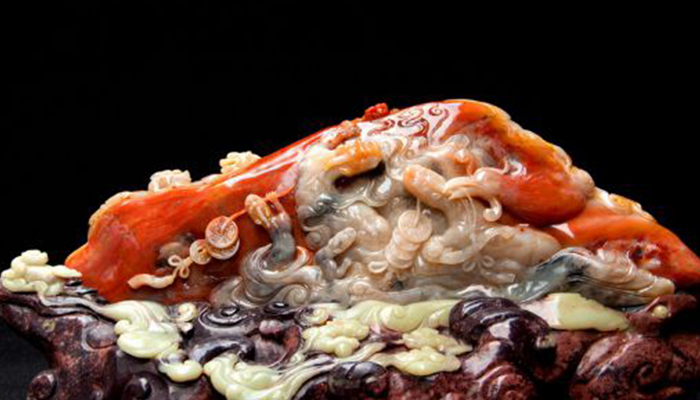
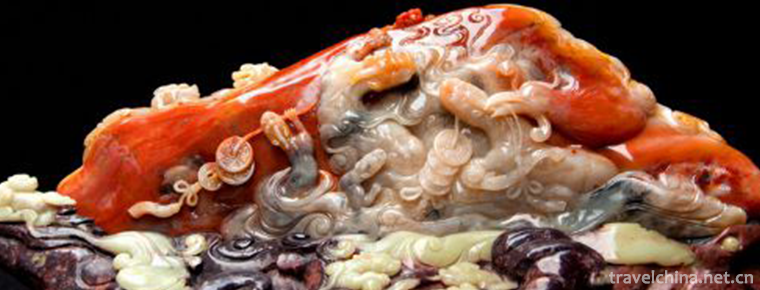
Qingtian Stone Carving
-
Steamed perch with scallion and black beans
Steamed bass cooking techniques are mainly steamed dishes, and their taste is salty and fresh. Steamed perch is one of the famous traditional dishes in Guangdong province
Views: 190 Time 2018-11-02 -
Xixi National Wetland Park
Xixi National Wetland Park is located in the west of Hangzhou City, Zhejiang Province. It is only 6 kilometers away from Wulin Gate, the main city of Hangzhou, and 5 kilometers away from West Lake.
Views: 217 Time 2018-12-07 -
Lingwu Shuidonggou Tourist Area
Shuidonggou Ancient Human Culture Site is located in Shuidonggou Village, Linhe Town, Linwu City, Ningxia. It is 30 kilometers south of Lingwu City, 19 kilometers west of Yinchuan City
Views: 200 Time 2018-12-12 -
Diaoyutai State Guest House
Diaoyutai State Guest House is an ancient imperial garden and modern State Guest House complex located on the east side of Yuyuantan (39 55'N 116 19'E) in Haidian District, Beijing, China
Views: 279 Time 2018-12-13 -
Luliang Colorful Sand Forest
Luliang color sand forest is a national AAAA tourist area, 18 kilometers away from Luliang County. 108 named scenic spots are located in the "Y" shaped canyon, with a total area of 180 hecta
Views: 149 Time 2019-02-06 -
Dai opera
Dai Opera, one of the national intangible cultural heritage, is a traditional drama in Jingpo Autonomous Prefecture of Dai Nationality in Dehong, Yunnan Province.
Views: 108 Time 2019-04-23 -
Kazakh Costume
Kazakh people are characterized by pastoral nomadic culture. Their clothes are easy to ride. Their national clothes are mostly made of sheep's skin, fox's skin, deer's skin and wolf's skin, reflecting
Views: 231 Time 2019-05-02 -
Sweat green
"Khan Qing Gele" is a heroic epic of the Mongolian people in Haixi. In the form of rap and speech, it tells the story of the Mongolian heroes destroying demons and saving the people, flashin
Views: 243 Time 2019-05-02 -
Cooking Skills of Confucian Cuisine
The cooking skill of Confucian cuisine, the traditional handicraft of Qufu City, Shandong Province, is one of the national intangible cultural heritages.
Views: 122 Time 2019-05-09 -
She Nationality Folk Songs
She folk songs can be seen everywhere, expressed in the form of She language singing. Every Festival and festive day, singing soars. Even when working in the fields in the mountains and visiting relat
Views: 355 Time 2019-06-14 -
Yihuanghe Bar Dance
Hebang dance is popular in Hedong area of Yihuang County, Jiangxi Province. It is a kind of traditional folk dance developed by mountain people from generation to generation, chopping branches on the
Views: 280 Time 2019-07-12 -
Yi dress
The costumes of the Yi nationality are colorful, unique in style, and have nearly 100 kinds of shapes. Historically, because of the numerous branches and scattered residence of the Yi people, there ar
Views: 232 Time 2019-07-12
